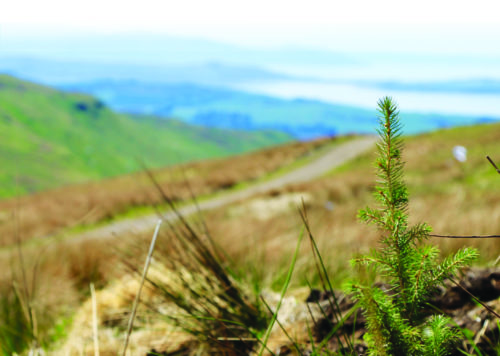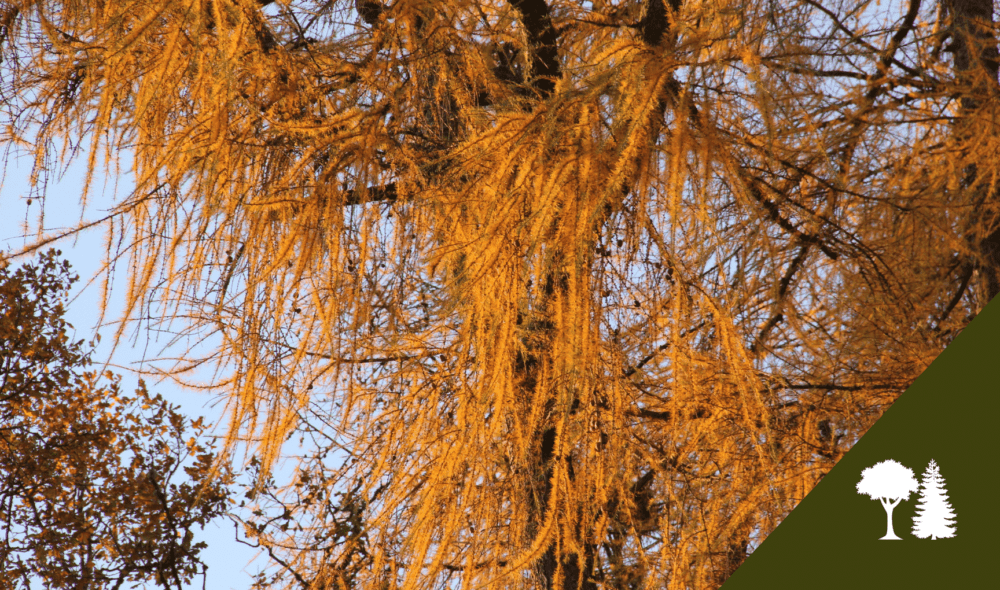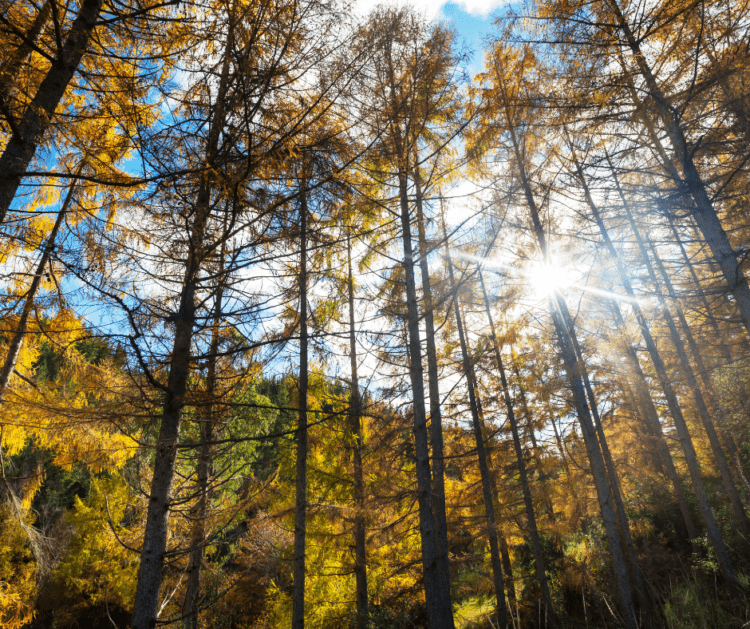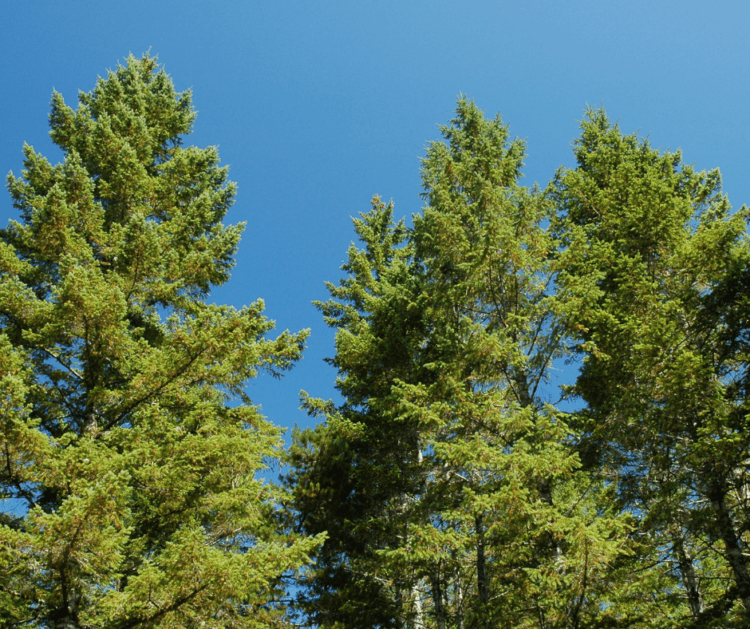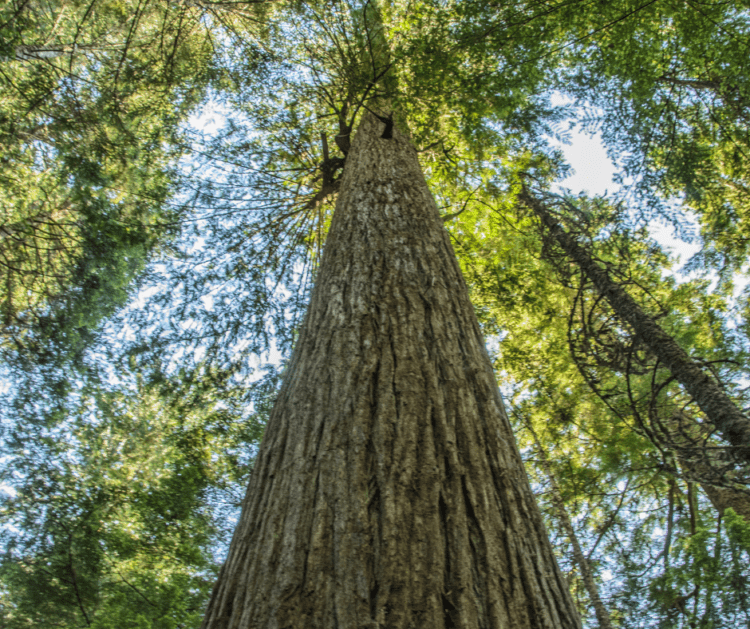Beauty
Larch will be sorely missed in many of our forest landscapes. In truth, no evergreen tree can supplement the seasonal variety of larch. For that reason broadleaved trees, or mixtures of broadleaves with conifers, may be an appealing substitute. Scotland has a particular complex surrounding leaf trees with a polarised view of broadleaves only being suitable for conservation and conifers required for production. If we truly believe in ‘productive woodlands’, as is often stated, then perhaps we ought to put the leaf trees to work?
If you read back to the days before Sitka spruce the pages are filled with references to oak and other hardwoods as being the most desirable species. Thanks to dedicated tree breeders such as the Future Trees Trust we now have access to UK improved material for a number of species such as silver birch, Sycamore and wild cherry which will be superior to unimproved native stock.
Of course, many of the more extreme sites we deal with may have limited capacity to support comparable growth of broadleaves if support them at all but that’s not to say there can’t be a place for mutually beneficial mixtures i.e. birch or aspen mixtures with spruce even if they don’t complete the rotation. There may be longer term reasons to consider such options (see ‘Effect’ below). In a woodland creation context there may be increased opportunities for diversity either as a function of better quality land or compelled by the constraints of modern design. If we consider some predictions for future climate such as a massive increase in accumulated temperature for parts of south Scotland that may further increase our options.
Choosing One
Aspen is one our most underrated trees in Scotland. It has a fantastic range of seasonal colours not to mention the unmistakable sound it makes on a breezy day. If handled properly it can establish quickly on a range of site types and exhibit impressive vigour. This fast growth makes it an ideal candidate for mixing with conifers. Its capacity for site improvement through deposition of base rich leaf litter and drawing up nutrients from deep in the soil makes it particularly useful for the latter purpose. Its wood properties appear to compare reasonably well with spruce despite the general reputation of the poplar family. It is capable of bouncing back from disaster through root suckers following felling, windblow or fire. Barriers to its use have largely been availability of seed, the result being most plants raised through expensive micro-propagation often from a limited genetic base. Thanks again to a range of tree breeders this may not be the case for much longer and perhaps even changing climate may contribute to greater natural success.
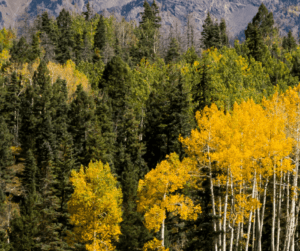
Aspen within a mixed woodland
Effect
Around time of ‘Planter John’ there is much reference to a spirit of improvement with regards to the quality of impoverished land. Descriptions of larch and leaf trees having a transformative effect on ‘wasteland’ (heather moorland) by encouraging a flora of richer herbs and grasses which was not the case with pine and spruce. ‘Soil health’ before it’s time. This allowed for livestock to be grazed under well thinned stands of trees (integrated land management?).
I was fortunate to receive a company sponsored place on a recent continental forestry tour to Germany and Austria where foresters think far more about the effect of their choices on long-term sustention – something we desperately need to get on board with. In the Germanic world, experience has shown that perpetual rotations of pure spruce simply aren’t tenable on certain lithologies with productivity declining through time. One forester talked of the requirement for beech in order to grow the best spruce as its litter ‘feeds’ the soil. The same is true of the ecology of the Pacific Northwest American Forests we borrow so much from where natural stand replacement sees colonising phases of broadleaved pioneers nourishing the soil before the conifer cycle begins again. This level of understanding is the difference between silviculture and tree farming and is essential to the concept of sustainable forest management.
If I had to choose one
Again the humble aspen would be my choice, particularly as a component of conifer stands. Rather than have multipurpose forestry expressed as distinct units of either production or conservation why not do it in one whilst looking after the productive capacity of the site? There are obvious challenges in implementing this; browsing pressure is just one. However most ideas in forestry tend to get bogged down in all the negative reasons not to act rather than aspiration for what could be gained. See descriptions from the early 1900’s describing an inferior American spruce that will never compete with the larch or the oak!
Profit
This may be the heading most familiar to us as in many of the woodlands we work in it has generally been the prime aim. If larch has taught us anything it may be the value of management. The difference in quality and thus value between the best managed/well sited stands of larch and their polar opposites can be quite immense. The norm for South Scotland, at least more recently, has been little or no management. Assuming we replace unmanaged lower value larch in equal measure with another species then there may be very little impact on profit at all. If anything there are a number of species which may produce significantly more volume under the same circumstances. Western hemlock and Noble fir for example have a decent if infrequent history in the southern uplands. If we abandon all thoughts of beauty in favour of profit then other whitewood conifers such as Norway spruce become attractive and are becoming the mainstay replacement for larch in many plans I see but it’s debatable whether or not we will be thanked for making that change with regards to beauty.
If I had to choose one
Pacific silver fir deserves an honourable mention as we have experience of a Forestry Commission provenance trial from the 1980’s which has performed remarkably well in typically challenging upland conditions achieving volumes per hectare comparable with Sitka. However, If it had to be just one it would be western hemlock due to its tolerance of low fertility and a range of moisture regimes. Although it admittedly has issues with high exposure and, like Sitka spruce, early/late frost.
Marketing its timber isn’t always straightforward as certain provenances can be prone to a number of defects. But a number of authors have recently confirmed that its wood properties are generally equivalent or superior to that of Sitka spruce. My fondness for hemlock comes from its prolific natural regeneration which is also usually the reason it’s demonised.

Western hemlock
Whatever the choice of species and the motivation behind them there are crucial steps we can take to ensure success:
- Quality site assessment
Clearly, fashions and politics change but the foundations of silviculture remain much the same. The first assessment when considering planting any species for any purpose should always be ecological fitness i.e. suitability for the climate and soil and only then should we move onto the demands of management objectives. Serious mistakes have been made by reversing the order! We have desktop tools such as the Ecological Site Classification but I would suggest that we spend more than enough time at computers already and that there is no substitute for hands on assessment.
- Quality plants
Choosing quality planting stock is one of the most important decisions we make. Neglecting this responsibility has long term consequences (especially if its hemlock!). There is a wealth of material from the past that isn’t always superficially available but well worth tracking down – see John Stirling Maxwell’s experiments at Corrour Estate. Do some research into the available origins of origin/ provenance available and try to choose the most improved stock available (provided it’s climatically suitable).
- Proactive management
In South Scotland we are all well versed with Sitka spruce but are often less familiar with other species. A one size fits all establishment model could never suit the entire spectrum of different site requirements. Again, take the time to research what information is available. Absorb a number of sources and make your own mind up. Always manage for quality. A snip with secateurs in formative years could be the difference between firewood and furniture.
This article was taken from The Leader Magazine
